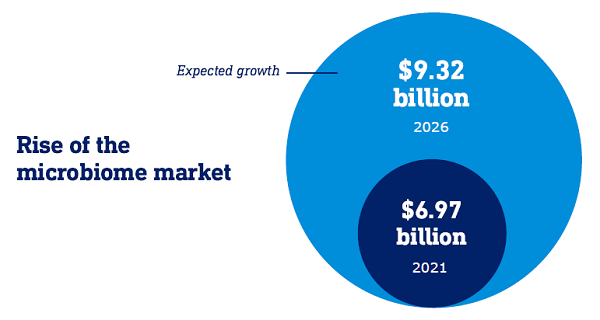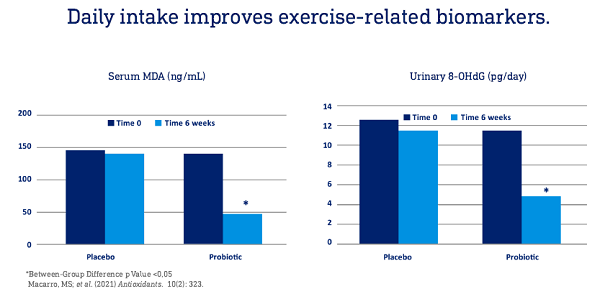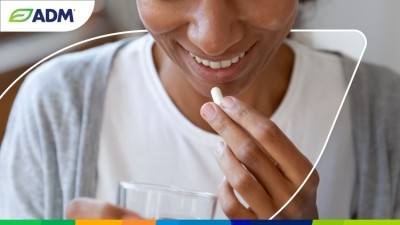Promotional Features
Strengthening the Active Market with Probiotics
Opportunities abound for brands in the active/sports enhancement space: an innovative way is to support the gut-muscle-axis with probiotics.
The active adult and fitness market is robust and growing with more people committing to improving their overall health and wellness and preserving mobility. According to Grand View Research, the global sports nutrition market reached approximately $42.9 billion in 2022 and by all counts, the sports nutrition market has gone mainstream.
“Consumers are looking for new and exciting solutions that enable them to support their holistic health and see improvements either in the gym, on the track, or within their sport of choice,” emphasized Vaughn DuBow, Global Director of Marketing, Microbiome for ADM.
According to Nutrition Business Journal’s “Sports Nutrition and Weight Management Report 2023,” the top reason why consumers use sports nutrition products is to improve their general health, with 63% of US respondents noting that this was their top priority. The second most common response (39%) was to improve their sports performance or active lifestyle.
Meanwhile, one of the busiest categories of supplements has been those that nourish the microbiome -- and an increasing number of health-minded consumers are all in. The “microbiome market,” which topped at $6.97 billion in 2021 is expected to balloon to $9.32 billion in 2026.
“Combine this demand from consumers with the rise of probiotics in recent years, the time is prime for an innovative probiotic formula that enables brands to provide their consumers with a product shown to work by enhancing the function of the gut-muscle axis (G-MA),” Vaughn commented.
About the G-MA
The gut-muscle axis, a newer pathway involving the microbiome, primarily regulates muscle proteins and function. 1
The gut-muscle axis reveals itself through an active lifestyle. Intense and frequent workouts not only generate chronic oxidative stress and inflammation that affect how muscles adapt to workouts they also disturb intestinal homeostasis, including the microbiota profile.
Researchers state that optimal intestinal microbiota composition can reduce amounts of inflammatory markers as well as impede production of reactive oxygen species. In this study, the researchers recommend supplementation with probiotics to enhance the gut-muscle axis, and they emphasize this for everyone, not only for athletes. 2
How a New Probiotic Ingredient Works
A study on a novel probiotic blend of three lyophilized strains from ADM has shown its ability to support the enhancement of exercise/fitness and improve recovery for active consumers by influencing the gut-muscle axis via the microbiome.
The randomized double-blind, controlled clinical trial evaluated the effects of consuming the probiotic blend (Bifidobacterium longum CECT 7347, Lactobacillus casei CECT 9104, and Lactobacillus rhamnosus CECT 8361). In the study, 43 male cyclists supplemented with the probiotic or placebo daily for six weeks.
The study team examined biochemical markers of excessive oxidation such as isoprostane (formed from free radical catalyzed peroxidation of EFAs), serum malondialdehyde (MDA, a marker of oxidative stress) oxidized low-density lipoprotein (Ox-LDL, or elevated bad cholesterol), 8-hydroxy-2'-deoxiguanosine (8-OHdG, a biomarker of oxidative DNA damage), and protein carbonyl (oxidative damage in proteins), as well as the antioxidant enzymes glutathione peroxidase (GPx), and superoxide dismutase (SOD). The objective was to compare how the probiotic blend favorably impacted levels of these biomarkers against placebo and to quantify those levels.
The researchers analyzed the data and found that supplementing with the proprietary strain trio reduces post-exercise-related oxidative stress, which supports aspects of exercise and recovery. It reduces serum oxidized low-density lipoprotein and elevated serum superoxide dismutase levels, providing a favorable balance for regular sustained activity. Supporting an active lifestyle is the first step toward healthy aging and ADM’s new probiotic blend provides formulation flexibility to bring function and convenience.
“Having new and exciting solutions within the active lifestyle and healthy aging categories is extremely exciting as there have been very few proven ingredients released in this space in recent years,” DuBow said. “Additionally, with the rise of popularity in probiotics over the past several years, this formula enables dietary supplement companies the opportunity to provide consumers with the health benefits they’re looking for most, in a new, unique, and differentiated offering.”
Probiotics Scale New Consumer Heights
This study exemplifies the increased research of the microbiome. For example, in 2021 alone, there were just under 10,000 published studies examining this in vivo environment -- what impacts it, and how nutrition such as probiotic strains encourage it to influence health. Further, products that cater to the microbiome reached $6.97 billion in sales in 2021, a figure that is expected to blossom to $9.32 billion in 2026.
Probiotics are well understood to be beneficial for health, yet consumers are just gaining an understanding of the microbiome, at least in general. According to FMCG Gurus’ March 2022 report, “Health and Wellness: Gut Microbiome in 2022,” while 67% of global consumers said they were aware about bacteria that exist in their GI systems, only15% have heard of the gut microbiome. The same report showed that globally, 43% of consumers have used probiotics in the previous 12 months.
This market data strongly suggest there are numerous formulation opportunities with probiotics, especially unique probiotic blends that support active lifestyles and provide benefits for routine fitness.
ADM’s new proprietary probiotic blend is non-GMO, Halal, Kosher, and free of gluten and lactose. It is also QPS-list compliant. It can swiftly become the “go to” probiotic for health-and-wellness consumers dedicated to remaining active, strong, flexible, and ready to go!
DuBow added that ADM is “constantly working on additional clinical studies to explore more possibilities within the microbiome space and expects to find far more benefits available from this blend thanks to the powerful gut muscle axis connection.”
References:
1 Franzoni, Oxidaitve Medicine and Cellular Longevity 2022 (October)
2 Przewlocka, et al. Nutrients 2020 12(5):1451
3 Sanchez Macarro, Antioxidants (Basel) 2021 Feb 22;10(2):323









